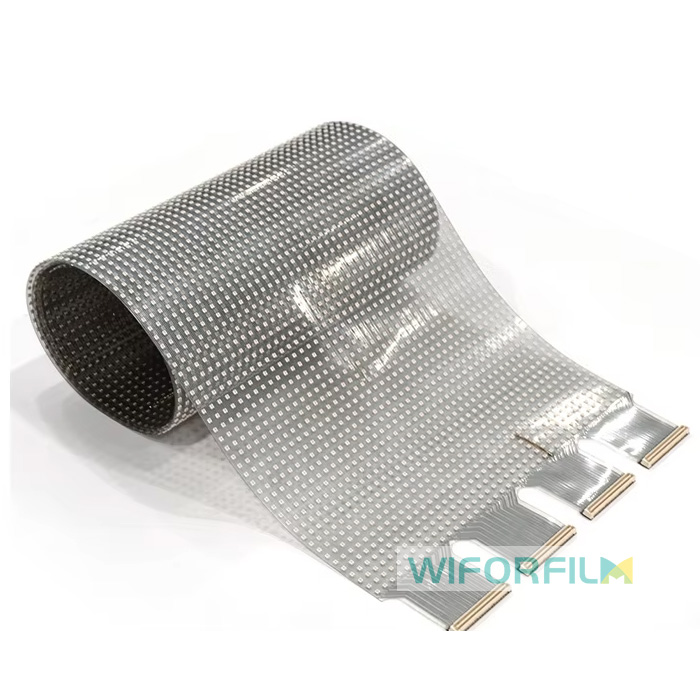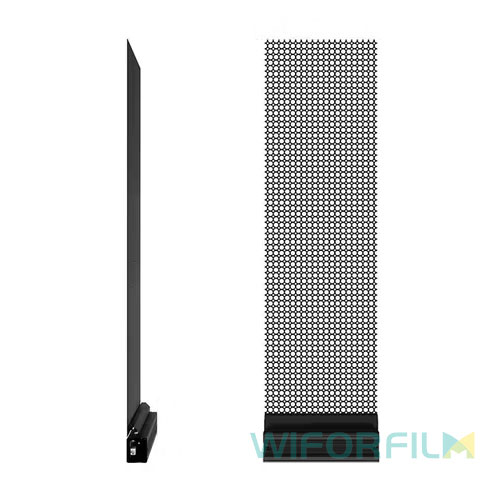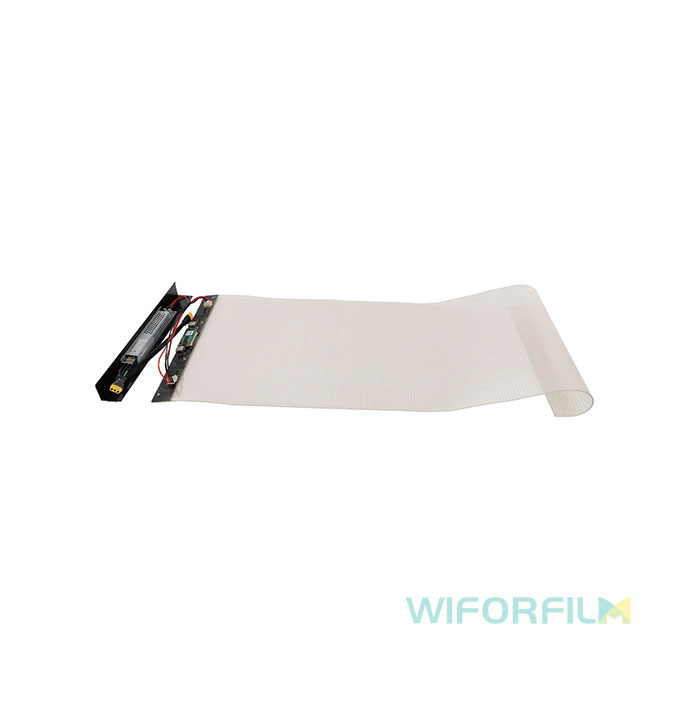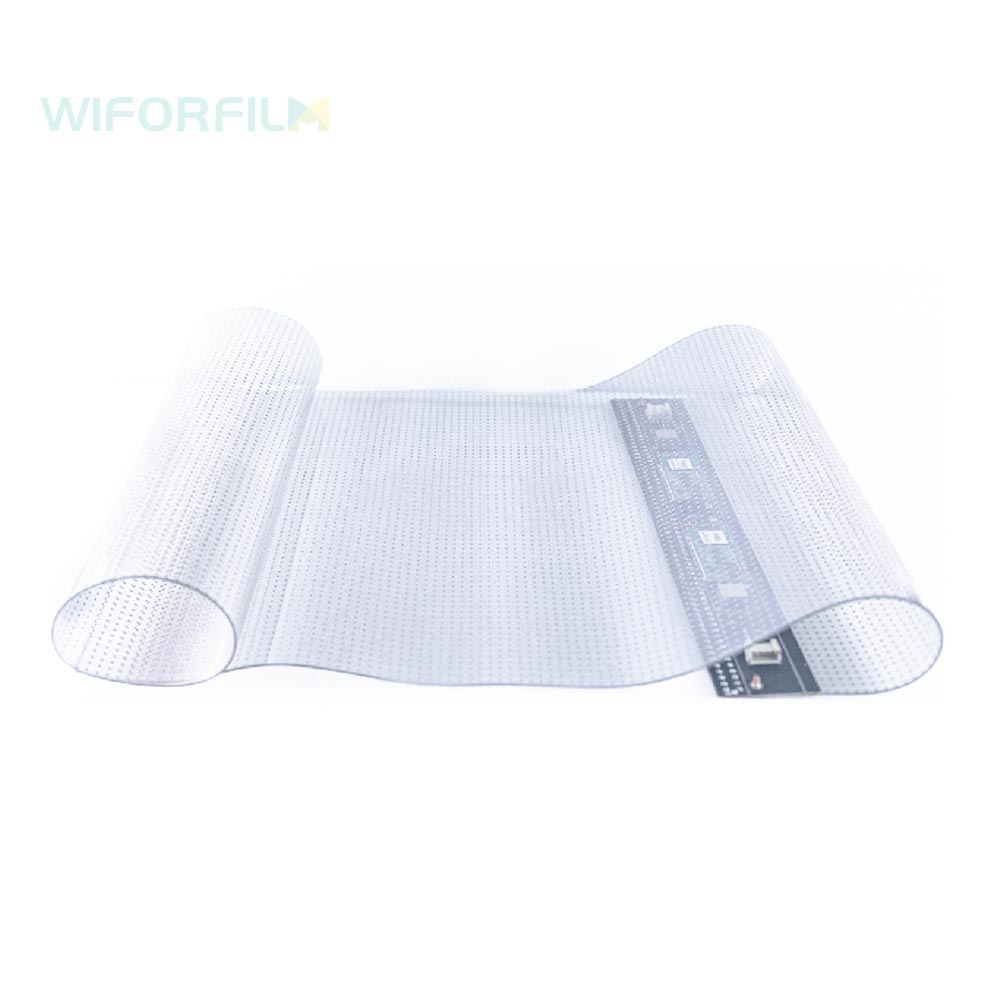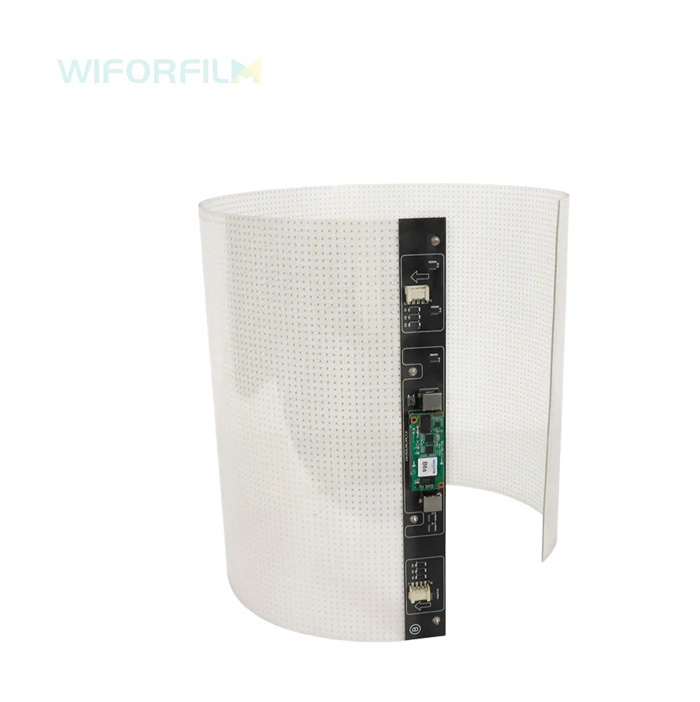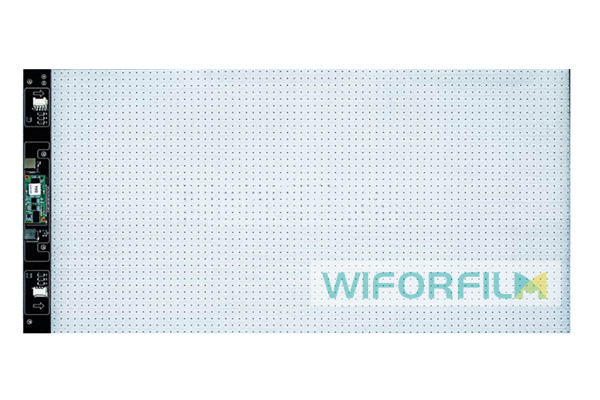
Transparent LED film is an innovative display technology that merges light-emitting diode (LED) technology with flexible, transparent substrates to create a new form of dynamic, see-through displays. This cutting-edge technology allows high-resolution images and videos to be displayed on surfaces like glass windows without obstructing visibility. Here’s a detailed look at how it works.
Structure and Components
The core of transparent LED film consists of ultra-thin LED diodes embedded into a transparent material, typically a flexible plastic substrate like PET (Polyethylene Terephthalate). These LEDs are arranged in a grid or matrix pattern, allowing them to illuminate in specific sequences to form images or videos. The transparent material makes it possible for light to pass through, maintaining high levels of visibility from both sides of the display.
The LED film itself is highly flexible, meaning it can be applied to curved or irregular surfaces such as glass windows, walls, or even furniture. Due to its lightweight nature, it doesn’t require significant structural support, making it ideal for architectural installations or commercial spaces where aesthetics and functionality are key.
Working Mechanism
The operation of transparent LED film is based on the principle of electroluminescence, where the LED diodes emit light when electrical current flows through them. Each diode can produce light in various colors by adjusting the current. When the film is powered and activated, the individual LEDs light up in programmed sequences, creating images, text, or video content across the transparent surface.
Despite being a display, the film allows for around 80-90% transparency, depending on the specific product and density of the LED matrix. This transparency level ensures that the display doesn't hinder visibility through the surface it is applied to, which is a major advantage in retail windows or building facades where maintaining a clear view is essential.
Control and Integration
Transparent LED films are typically connected to a central control unit that manages the content display. This system can be controlled remotely through various means, including wireless networks or integrated control software. The film can display static images, scrolling text, or full-motion video, and the brightness and contrast of the display can be adjusted depending on lighting conditions or user preferences.
Moreover, the installation of transparent LED film is relatively straightforward. It comes with an adhesive backing that allows for easy attachment to glass surfaces. The film is modular, meaning multiple panels can be connected seamlessly to cover larger areas without visible breaks in the display.
Applications
Transparent LED film screen has broad applications in advertising, architecture, interior design, and retail. It is commonly used in store windows to showcase advertisements or product information while allowing natural light to pass through. In corporate settings, it can be installed on office windows or conference room partitions to display digital content without losing openness in the design. It is also increasingly being used in building facades, where it turns otherwise static glass structures into dynamic, interactive canvases for digital art or commercial advertising.
Advantages of Transparent LED Film
-
Space Efficiency: Since the film is applied directly onto surfaces like glass, it doesn't occupy any floor space, making it perfect for environments where maximizing usable space is important.
-
Aesthetics: Its transparency ensures that it doesn’t detract from the appearance of the surface it is applied to, preserving the original aesthetic while adding a layer of functionality.
-
Energy Efficiency: Transparent LED films are energy-efficient, using low amounts of power compared to traditional displays due to the efficient nature of LED technology.
-
Flexibility and Versatility: Its flexible nature allows it to be used on a variety of surfaces, from flat windows to curved walls, and its content can be easily updated or changed based on user needs.
Conclusion
Transparent LED film represents a significant advancement in display technology, offering a sleek, innovative way to integrate dynamic digital content into glass surfaces while maintaining visibility. Its versatility, ease of use, and energy efficiency make it an attractive option for a wide range of commercial and architectural applications. As the technology continues to evolve, it is likely to become even more widespread in industries that value both form and function in their digital displays.




